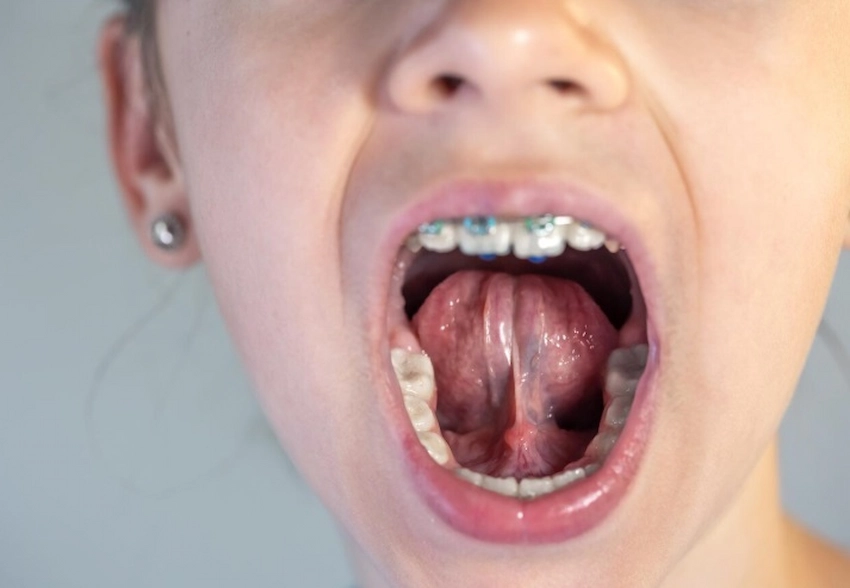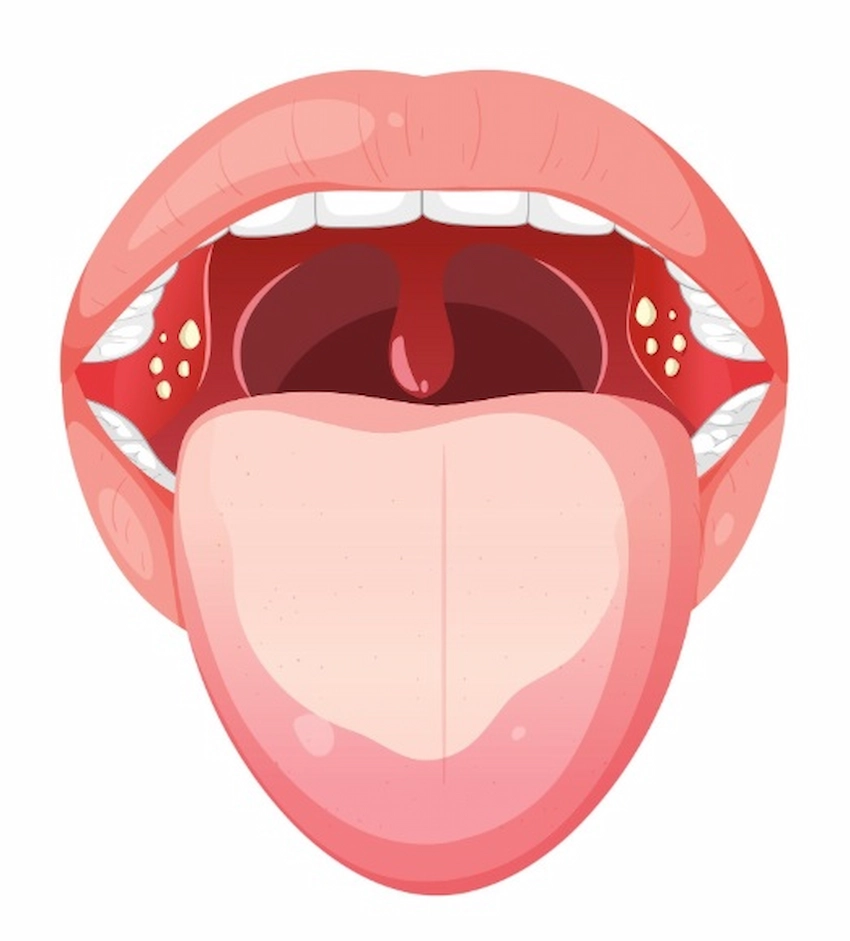🦷All About The Frenulum In The Mouth

The frenulum, a little-built but fundamental tissue in the mouth connects the gums to lips and tongue, facilitating oral movement such as speaking, swallowing, and eating. Learning about it will assist with dental care management and hygiene. The small yet significant attaching stripe of tissue known as the frenulum, can be taken for granted while going through daily activities like talking, chewing food, or maintaining healthy teeth.
It assists in pronouncing words, moving the tongue precisely while chewing, and the flossing and brushing of the teeth hence being important. Nevertheless, its significance, along with numerous problems and diseases troubling it can’t be ignored. Let us discover gradual complex functions and everyday lives of these tiny but vital members of the oral cavity, highlighting commitment towards improved quality of an individual’s daily oral health and hygiene.
What is the Frenulum in the Mouth?
The frenulum, a thin band connecting various parts of the mouth and reinforcing they stay firm and act well, is a structure that hardly receives due attention. The liners of the oral cavity can easily act out of order and if the frenulum is in proper functioning condition it assists them to work excellently together.
In short, frenula connects the upper lip to the gums, the lower lip to the gums, as well as anchoring the tongue to the floor of the mouth, which makes up the oral cavity. Here’s the thing, minor as they appear, it is through understanding about the frenulum, that one will understand how important the structure is for a fluent speech, having to swallow food correctly, and for keeping one’s mouth hygienically functional every day.
Types of Frenulum in the Oral Cavity
Most functions are achieved through the help of the various types of frenulum in the oral cavity, which assists different movements of are of benefits for tongue lateralization as well as stability. The ineradicable rolls in textual unit are:
- The Labial Frenulum: Is a band –like connective tissue, connecting the inner side of jaw lips to the upper gum and that is also present in the lower lips. It permits postures, movement, and also support of the lip. It helps to adhere to the position of the lip thus helping to have a clear speech.
- The Lingual Frenulum: Exists below the center of the tongue towards the lower jaw this band assists its movement as well as stabilizing among others actions. It allows the tongue to be positioned and controlled properly since it has a limited range of motion. Additionally, a condition known as “tongue-tie” is made evident by the skin attaching the tongue in a strange manner thus hindering a person’s capability of speech and chewing properly.
- Buccal Frenulum: Is found towards the insides of cheeks and is a variety seen on the labial and lingual frenulums connecting the inner side of cheeks to gums in addition to holding the cheeks firm. These tissues may not seem important on the Dentist’s chair, but the frena do contribute help in the zone and also maintain the overall position of the entire oral cavity.
- Palatine Frenulum: This particular being inherently present in the area of roof of the mouth and governs the position of soft palate to be appropriately maintained in its place.
Every which way frenulum is unique functionally, thereby helping to maintain the mouth when healthy, well-formed and functional enough for daily life interventions; problems arising as a result of functioning poorly, malformed or unusually positioned frenula must not be taken lightly as they create personal struggles towards effective communication especially through speech related matters.
Problems Associated with Frenulum Abnormalities

Having abnormal frenula could refer to a short frenulum hence causing various forms of oral health challenges in everybody from children to adults. Examples of these troublesome structures are cases such as excessive tongue ties or short frenula (frenulum breve), causing a lot of inconveniences towards leading crucial aspects of our lives.
The consequences of such oddities can interfere either subtly or overtly on someone’s daily routine therefore let us consider some of the most frequent problems that accompany these disorders in humans; but initiating with possibly the correction of pronunciation issues being often witnessed for those having issues with their frenula poorly positioned, being metaphorically bound somewhere underneath the light.
This could prevent amused articulation of certain words hindering fluent conversation or even indicating some kind every other person understands or gets bored listening to.) For instance, in infants, in particular, it is caused due to a shorter frenulum than normal which is likely to hinder the baby from properly latching during feeding thus potentially affecting nutrition & weight growth.
Breastfeeding can be one feeding method truly cherished by many women but not everybody has it this way hence we cannot overlook this abnormality since it appears like an uphill struggle for the child affected with little or no comfort while feeding. Not only does it affect health but also hampers the mothers’ perception of motherhood as a struggle rather than an ecstatic moment given that they have to deal with such difficulty being victims.
Frenulum Release Procedure and Recovery
The frenulum release procedure, referred to as a frenectomy or frenotomy, is a quick and simple surgical treatment, performed by a dentist or oral surgeon. The procedure involves careful cutting or removal of the frenulum tissue restricting the tongue or lip’s motility. The patient is usually treated with local anesthesia to make the procedure tolerable.
The recovery process is very swift. Minor swelling and discomfort in the treatment area may occur but should reduce within days. Following these important self-help tips can aid your successful recovery. Eat soft foods and drink plenty of fluids to eliminate any form of irritation in the area. Care for your mouth and keep the area shaved, with the most possible care, for them not to worsen.
Avoid jumping or playing gymnastics until your physician says it is correct to be able to do so. Follow-up appointments foster adequate healing and the question of any possible concerns. The medical professional will advise on how the therapy is proceeding or how to relieve any pain that may arise.
Importance of Frenulum in Speech Development

The frenulum is an integral part of speech development; it plays a significant role and is vital in how the tongue and the lips work together in pronounced speech. A healthy frenulum allows movement of these key speech parts, an integral part of communication. Here are various aspects where the frenulum is highly regarded:
- Facilitates Tongue Movement: A flexible frenulum supports the full range of tongue movement, which is vital for producing sounds accurately. For example, the use of the tongue in different aspects of speech, such as “t” and “l,” requires some action readjustments that a normal frenulum can guarantee.
- Promotes Tongue Control: A well-structured frenulum promotes adequate tongue control, an essential aspect of speech clarity and intelligibility. Additionally, it facilitates accurate positioning for sound articulation. Having a proper build of the frenulum is an assurance of very bright expression and accurate sounds.
- Helps Lip Movement: Just as it is with the tongue, the frenulum is crucial for normal movement of the lips. These organs help in forming sounds like “b” and “m”. If the frenulum is in a good shape, the lips can perform any desired movements for articulated sounds that use lips correctly.
- Supports Lip Control: Apart from just movement, the frenulum is vital for proper control of the lips; that aspect is again an essential element of good speech. On its functionality, control and the exact placement of the various parts of speech must use a proper
- Enables Lip Mobility: A properly positioned labial frenulum well-tucked in place allows for effective lip closure movements which become crucial while pronouncing specific accords.
- Affects Feeding: An unrestricted attachment can help enhance feeding ability among newborns leading to stronger oral skills that will aid them in developing good verbalizing skills as adults.
Providing early interventions for any frenulum issues can prevent speech delay problems from developing later among young people today. Monitoring each child’s progress through their formative years is now more important than ever before when it comes to ensuring that these speech-related difficulties do not take root. If parents suspect a problem or notice any troubling signs in their child’s speech development, they should think of consulting with the right health professionals early enough.
Frequently Asked Questions About the Frenulum
The frenulum is a small band of tissue that connects the lips and tongue to the gums and the floor of the mouth. It plays a crucial role in facilitating movements for speech, eating, and maintaining oral hygiene.
There are several types of frenulum, including the labial frenulum (connecting the lips to the gums), lingual frenulum (connecting the tongue to the floor of the mouth), and buccal frenulum (connecting the inside of the cheeks to the gums). Each one plays a role in facilitating movement within the oral cavity.
Common problems with the frenulum include “tongue-tie” (ankyloglossia) or lip-tie, where the frenulum is too tight or restrictive, affecting speech, eating, or breastfeeding. These issues can lead to discomfort and difficulties with oral functions.
A restricted frenulum can hinder the normal movement of the tongue or lips, making it difficult to pronounce certain words or sounds clearly. This can result in speech delays or difficulties in articulating specific phonemes.
A frenectomy or frenotomy is a minor surgical procedure to release or remove a restrictive frenulum. It is typically performed under local anesthesia and is designed to improve the mobility of the tongue or lips, aiding in better speech and feeding functions.
A short or tight frenulum can interfere with an infant’s ability to latch properly during breastfeeding, causing feeding difficulties and poor weight gain. A frenectomy can help improve the baby’s ability to latch and feed effectively.
Recovery from a frenectomy is generally quick, with most patients experiencing minimal discomfort. Swelling may occur, but the recovery process is typically complete within a few days to a week.
The frenectomy procedure is minimally invasive and is usually performed under local anesthesia, so pain is minimal. Post-procedure discomfort can be managed with over-the-counter pain relievers, and most patients heal quickly.
If your child is experiencing difficulty with breastfeeding, speech development, or tongue mobility, it may be time to consult a dentist or pediatrician. Early intervention can prevent future complications and improve oral function.
Yes, adults can undergo a frenectomy to correct issues such as a tongue-tie or lip-tie. This procedure can improve speech, eating, and overall oral comfort, providing long-term benefits for people who have struggled with these issues.




